Urbino, a small city in Le Marche, is famous for one thing: Raphael. Raffaello Sanzio (or Raphael in English) was born in 1483 in Urbino and died in Rome at the young age of 37, already one of the most famous painters in Europe. He was just 25 years old when he was summoned to Rome by Pope Julius II to paint a series of frescoes at the Vatican.
There is something about his work that’s hard to describe—lifelike isn’t quite right, I think. His figures are a bit too idealized to be truly lifelike, but his rosy-cheeked maidens, handsome men, and pudgy cherubs are mesmerizingly beautiful. He had quite an interesting life too—supposedly he was courteous, charming, and very popular with the ladies.
I’ve long admired Raphael’s work, not just at the Vatican, but also at Villa Farnesina and the Church of Santa Maria della Pace in Rome, so for the Marche-themed issue of Bellissimo (Italy Magazine’s quarterly e-magazine for premium subscribers), I ventured to Urbino to report a feature about the town and its prodigal son. Before I went, my wise editor Mary Gray warned me, “Let's try to avoid falling into language that positions Urbino as the ‘Florence of Le Marche’ or whatever.”
As an important hub for Renaissance art, Urbino might naturally be compared to Florence, but now that I’ve been to both, I think they’re more different than they are alike. In some ways, their difference comes down to size: the greater Florence area has a population of approximately 712,000, while the entire province of Pesaro and Urbino has a population of around 350,000. Florence gets an average of 10 to 16 million tourists annually. A search for the number of tourists who visit Urbino annually didn’t get any results, but no doubt it’s a fraction of the amount of tourists that flood Florence, making the city feel at times like a Renaissance-themed amusement park.
Walking around Urbino was actually very refreshing—precisely because I was one of the few tourists there. Urbino is a university town, so everywhere I went I saw students—many of them art students. It certainly helps to be young and fit in Urbino—the city was built on some extremely steep hills. Piazzale Roma—the emblematic entrance to the city, with a statue of Raphael in the center—is on top of a hill, while Piazza della Repubblica (the main piazza in the historic center) is at the bottom, so you can’t avoid climbing up and down.
My intrepid guide on this trip was Elisa Valeria Bove, who runs the luxury tour company Roma Experience and grew up in Fabriano, about an hour and 20 minutes from Urbino. “Urbino remains a place of traditions, but there’s always the desire to evolve. There’s the past and present together,” she told me.
Indeed, I learned about both Urbino’s past and its present on that trip, starting at Palazzo Giusti, a new boutique hotel in a historic palazzo. We checked in, freshened up, then went to have dinner at L’Angolo Divino, which serves contemporary Italian cuisine in a historic building.
The next morning, we started the day with a cappuccino and cornetto at Caffè Basili on Piazza della Repubblica, then dove right into the past at the Casa Natale di Raffaello (i.e. Raphael’s childhood home, which is now a museum). Even if there’s only one original work by Raphael there, I learned about his youth watching his father, Giovanni Santi, who was a painter at the court of Federico da Montefeltro.
Staring at the fresco he painted on the wall of his bedroom when he was a teenager, Elisa told me how the young painter left Urbino to apprentice for Perugino. His talent was nurtured further when he moved to Florence, where he encountered Da Vinci and Michelangelo. We took in the artifacts and replicas of his paintings of La Fornarina and La Dama con Liocorno, which are displayed at Palazzo Barberini and Galleria Borghese in Rome.
That afternoon we visited the Palazzo Ducale, which now houses the Galleria Nazionale delle Marche, with a guide named Enrica who works with Elisa. This, not Raphael’s house, is actually the most important museum in Urbino. The palace was built for Federico da Montefeltro, the Duke of Urbino, who made a fortune as a mercenary and used his wealth to commission great works of art. We must have spent at least ten minutes in his study, admiring the intricate scenes made with inlaid wood.
After a quick break for coffee and crescia (a flatbread from Le Marche used to make sandwiches), Enrica brought us to meet a couple of artisans keeping the traditions of Le Marche alive today. First up was a stop at La Stamperia d’Arte Ca Virginio, where we met Carla Luminati, a printmaker who also teaches workshops for locals and visitors.
Then Enrica asked if we wanted to meet a ceramicist and I immediately said yes. We drove over to Urbania, the next town over, and entered Ceramica Casteldurante. The small showroom had shelves full of intricately painted ceramics that looked like the ones we had seen earlier that day at the Palazzo Ducale. Enrica introduced us to Gilberto Galavotti, the master ceramicist who has studied and even restored some of those Renaissance pieces. I bought a beautiful serving platter and Elisa bought five pieces as gifts.
That evening, over dinner at the cozy Trattoria del Leone, we discussed how Urbino—and the whole region of Le Marche, really—is a hidden gem, unaffected by the overtourism plaguing Italy’s more famous cities. Urbino may not have fancy five-star hotels or Michelin-starred restaurants, but for travelers who want to get off the beaten path and understand how Italians live everyday with this tapestry of Renaissance culture, it’s definitely a place worth visiting.
Further Reading
My feature about Urbino is out now in the spring issue of Bellissimo, which is dedicated to Le Marche. It’s included for premium subscribers of Italy Magazine or you can purchase the issue here. (I also have a short piece about the Temple of Valadier and the Caves of Frassasi in this issue.)
You can read my review of Palazzo Giusti for Italy Magazine here.
Be sure to check out my interview with Elisa Valeria Bove here.
You can see all of the New Roman Times’ coverage of under-the-radar destinations here.


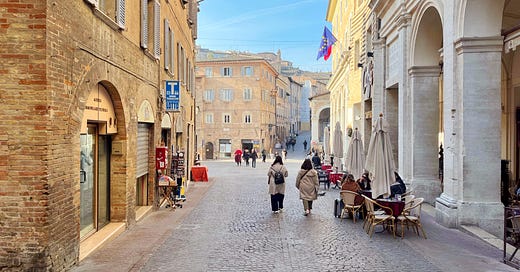




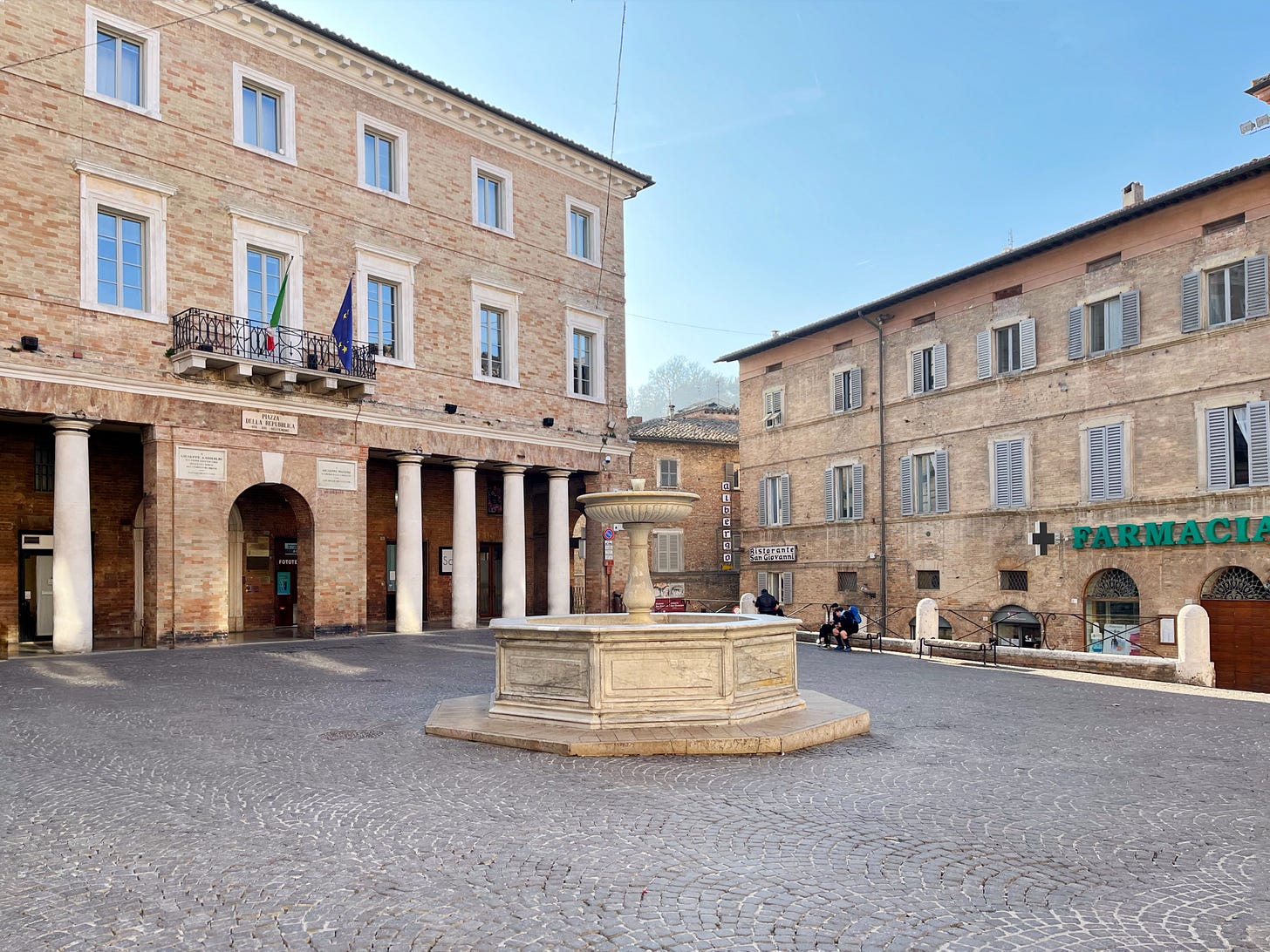
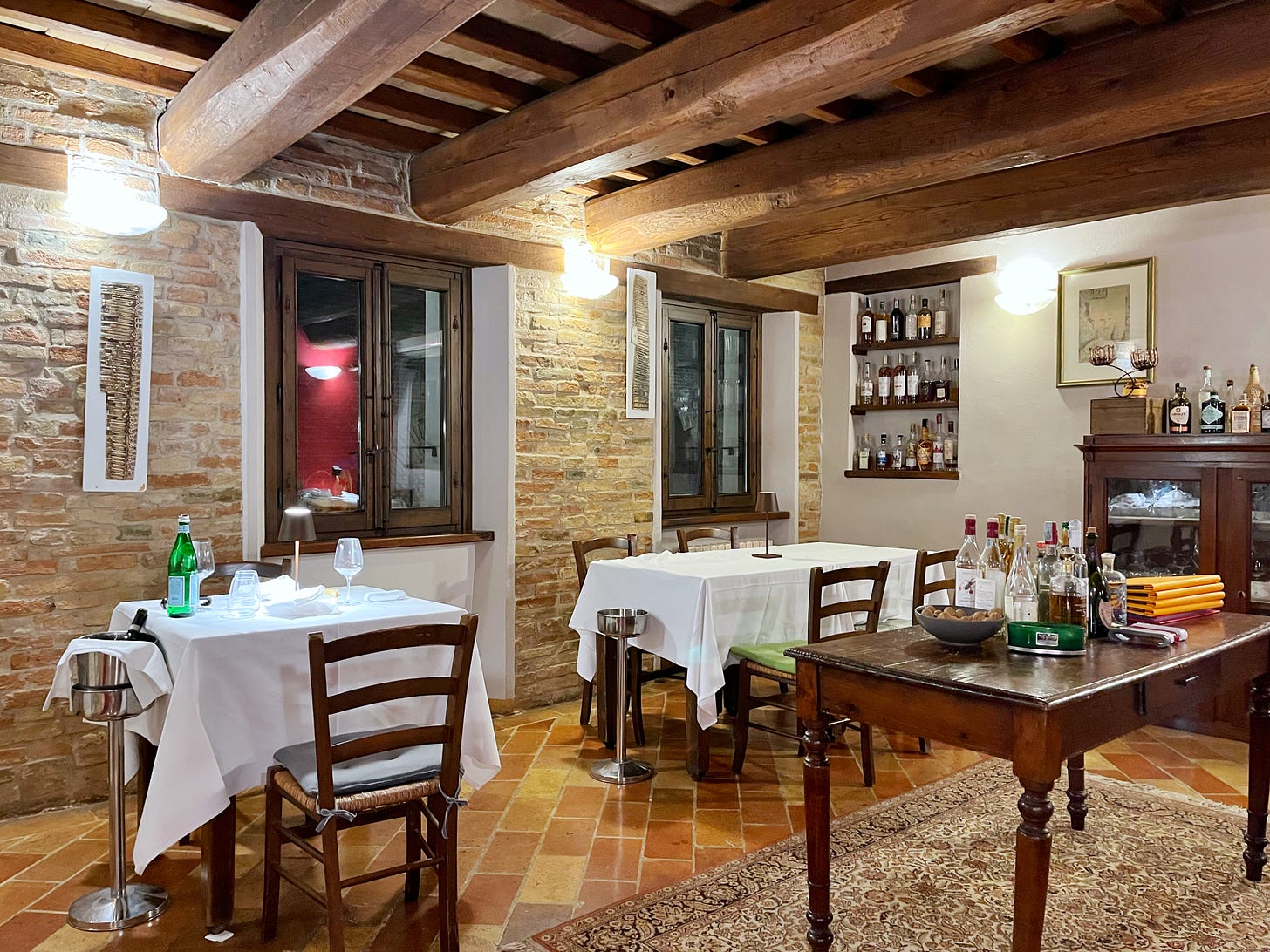
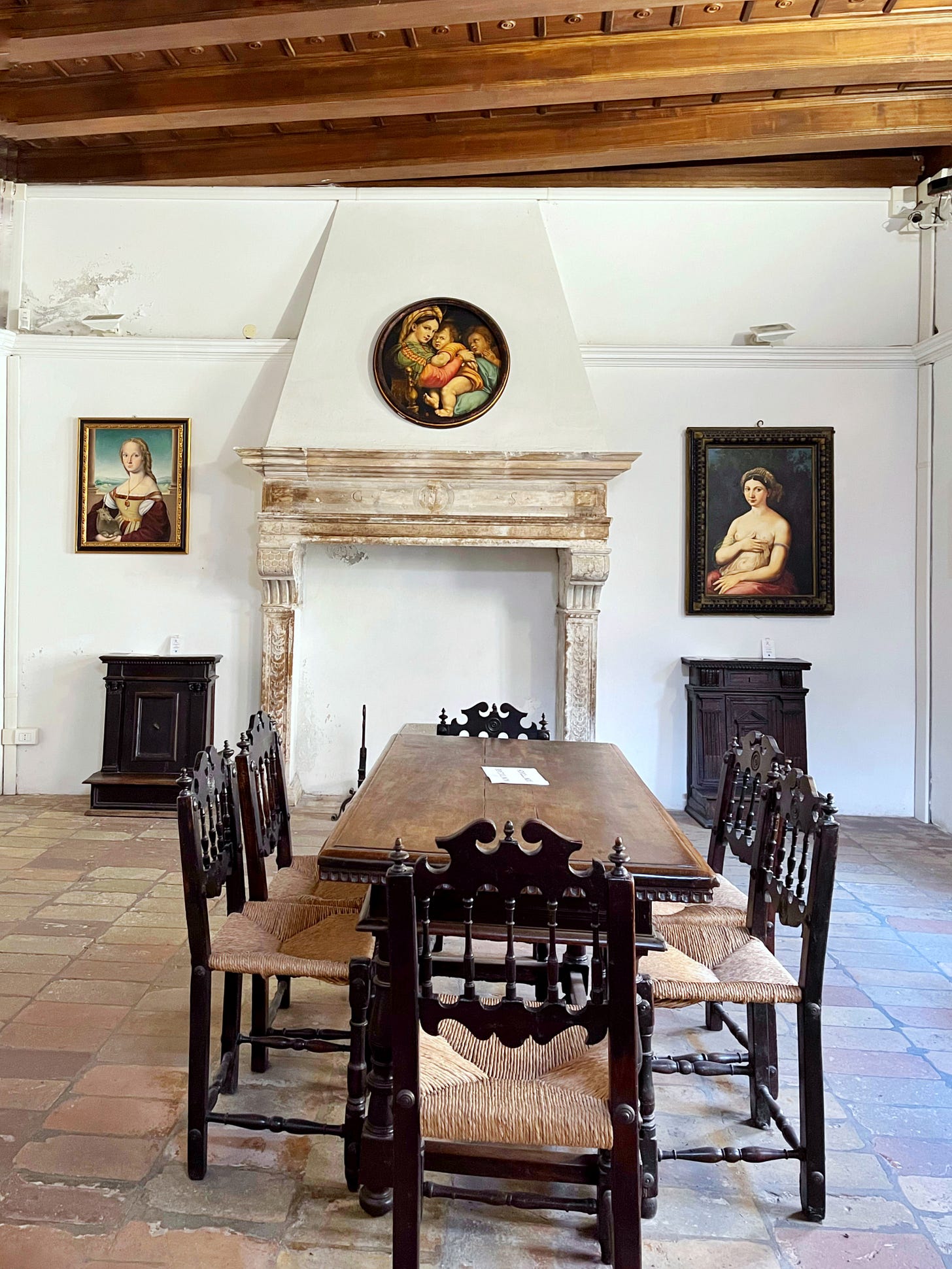
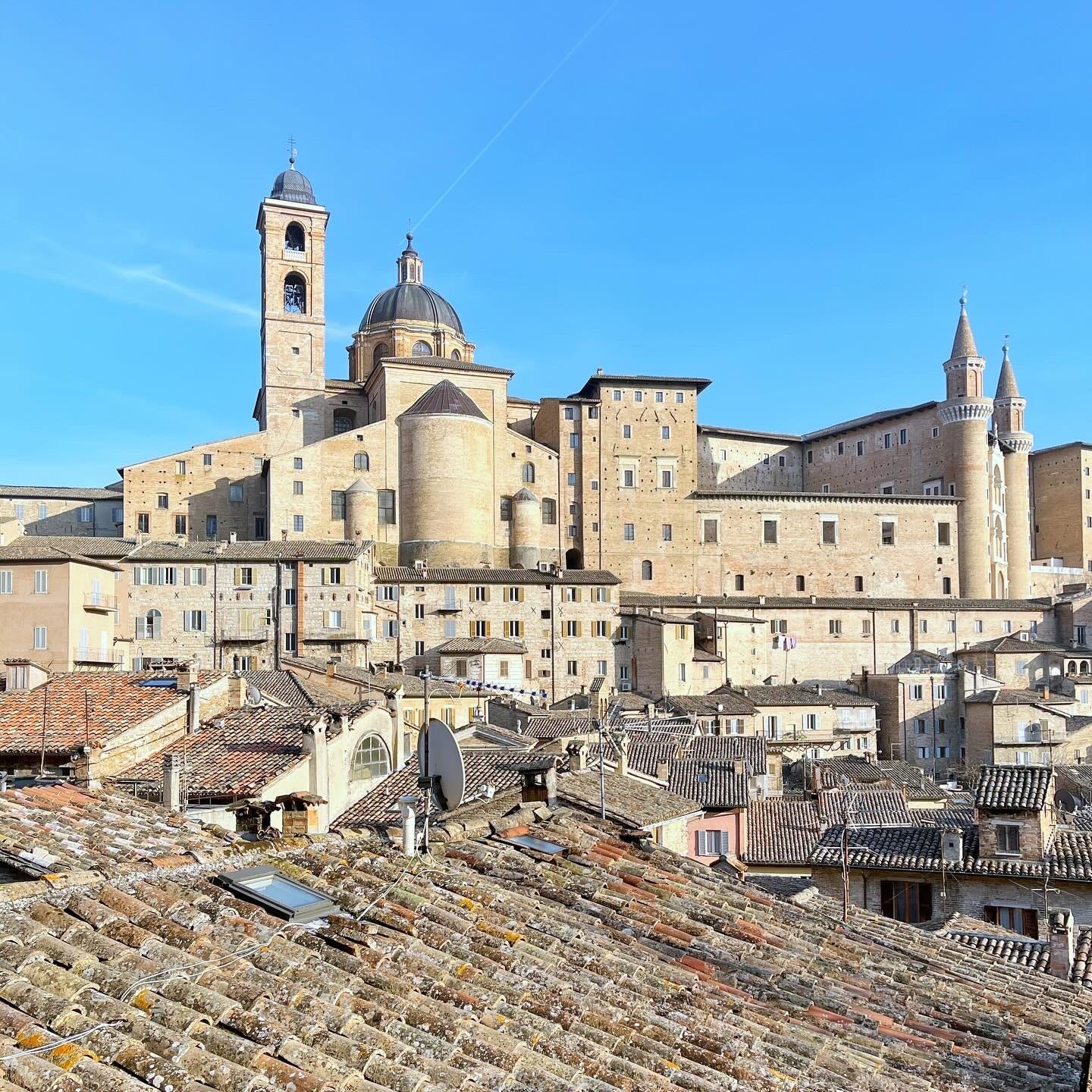
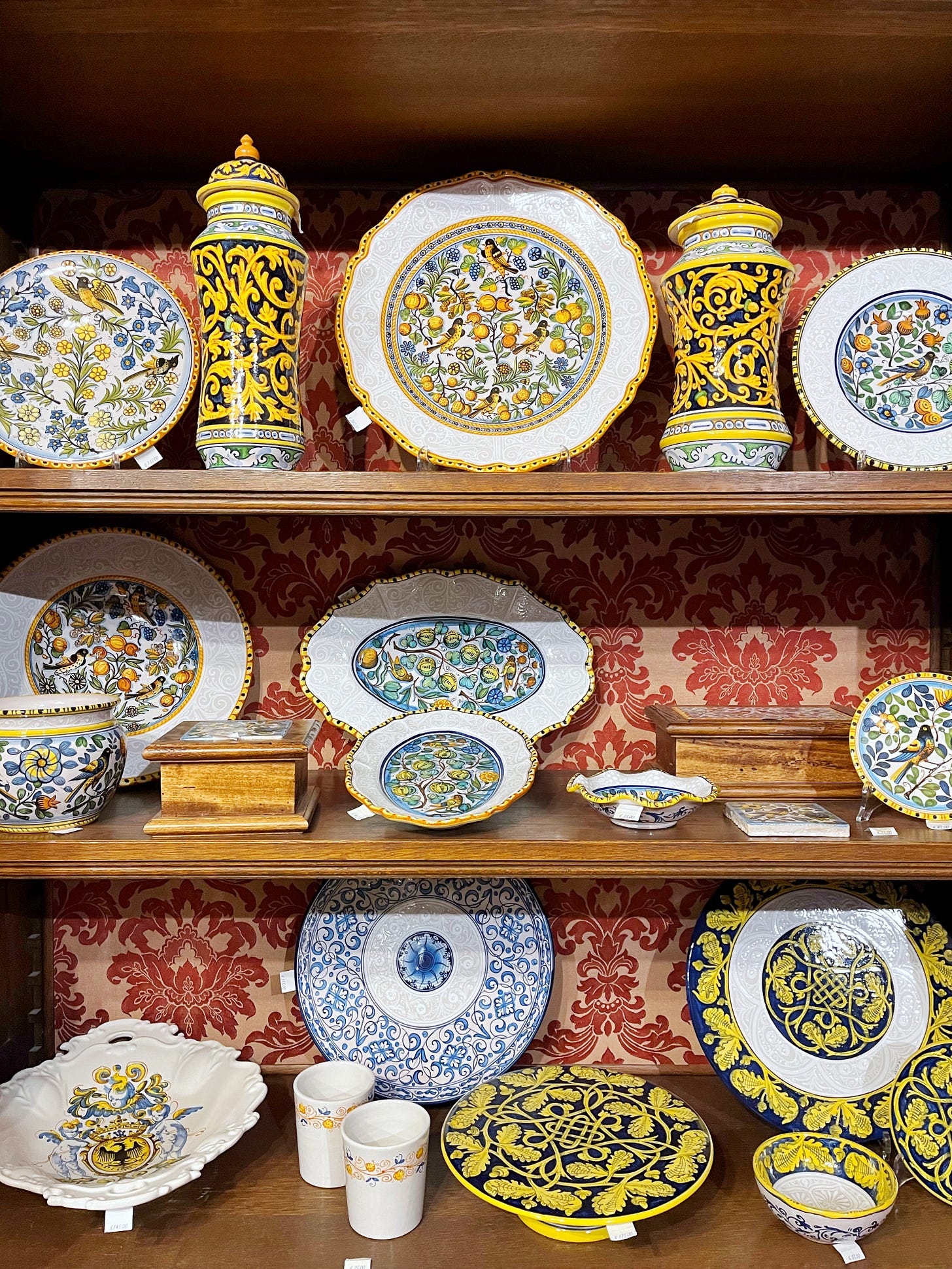
Another lovely article Laura and is a reminder to move it up on my list of places left to see in Italy✨
Grazie for your article. Le Marche is indeed a gem to discover, in fact we've chosen to move there: https://labellastrada.com/